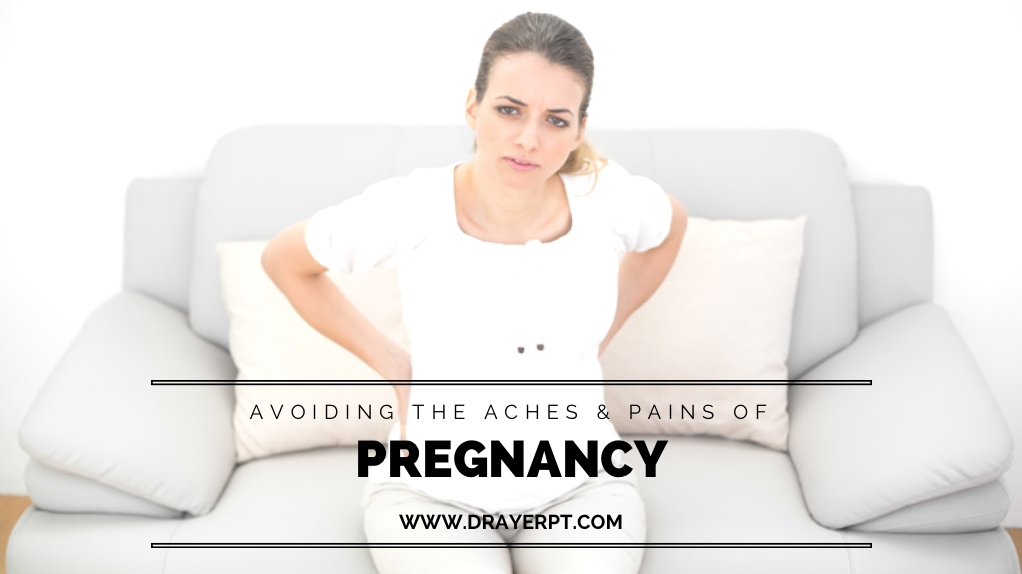Avoiding the Aches and Pains of Pregnancy
Jul 18By: Stephanie Lever, PT, Red Lion Center
 The birth of a baby is one of the most miraculous events this world has to offer. Labor pains are a well-known part of birth and delivery, but what about musculoskeletal pains and conditions during pregnancy?
The birth of a baby is one of the most miraculous events this world has to offer. Labor pains are a well-known part of birth and delivery, but what about musculoskeletal pains and conditions during pregnancy?
A mother’s body undergoes numerous changes that may cause aches and pains.
Vascular Changes
To support a growing baby, a mother’s blood flow can increase by up to 50 percent. During the later stages of pregnancy, women should limit or avoid lying on their backs to reduce compression of the vein in the abdomen that brings blood back to the heart. Symptoms of pressure on the vein include lightheadedness, dizziness, nausea, agitation and fainting.
Mothers should position themselves with a wedge behind their backs to elevate them or place a pillow under their hips so they are slightly on their side. Because of the increased blood flow, pregnant women also may want to elevate their feet above their chests to avoid swollen lower legs.
Gastrointestinal Changes
The pregnancy hormone progesterone causes decreased function of the esophagus, which may lead to heartburn. Smaller, more-frequent meals that are not fried or spicy may reduce the likelihood of heartburn.
Morning sickness is common in the first trimester but may be present during all three trimesters. Drinking plenty of water will help to avoid dehydration.
Musculoskeletal Changes
Diastasic Recti: Because of their expanding abdomens, many women experience “a diastasis recti,” which is a vertical separation of the abdominal muscles. Women should avoid straining and crunches as a core exercise to reduce the size of the separation.
A diastasis recti may last after birth and lead to weakness of the abdominal muscles. This weakness may predispose a woman to low back pain. To reduce this risk, physical therapy can help to increase core strength.
Carpal Tunnel Syndrome: Increased fluid retention can compress the neurovascular structures at the wrist, causing pain, burning, tingling, numbness and weakness of the hand. This usually resolves after birth, but a doctor might recommend wrist night splints to decompress the nerve.
Pelvic pain: This is one of the most common complaints during pregnancy. Hormones cause the joints to relax and become looser in preparation for labor and delivery. Women may experience pain with walking, sit to stand, turning over in bed, or standing on one leg.
Exercises aimed at strengthening the pelvic floor, abdominals, gluteal muscles, and back can help to stabilize the joints of the pelvis and reduce the pain experienced during daily activities. In more severe cases, a doctor might recommend a sacroiliac joint belt to manually stabilize the pelvic joints. A physical therapist can fit and instruct in the proper use of a sacroiliac joint belt.
Neck and low back pain: These can result from postural changes during pregnancy. Awareness of good posture can help to reduce strain on the neck and low back.
Urinary incontinence: This is common during and after pregnancy. Pelvic floor-strengthening exercises, known as kegels, can help to reduce incontinence.
Expectant mothers experiencing any of these symptoms may want to consult their doctors to see whether they would be good candidates for physical therapy. If pregnant, you always should consult a doctor before beginning an exercise routine.
Overall cardiovascular and muscular fitness can improve pregnancy by reducing the risk of pain and helping to make labor shorter, easier and less complicated.
